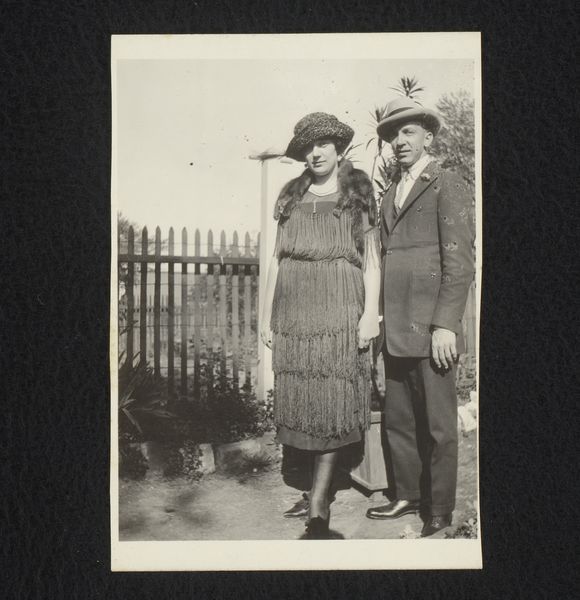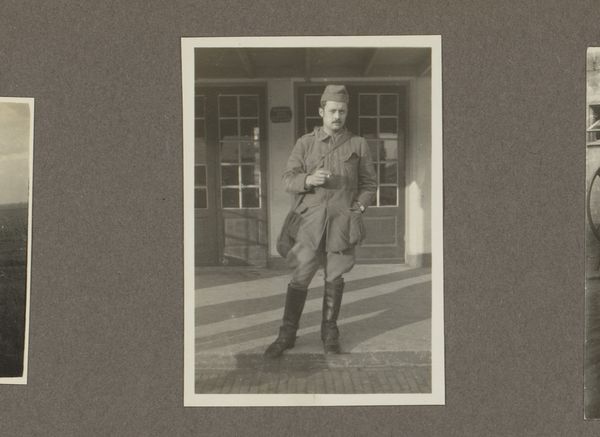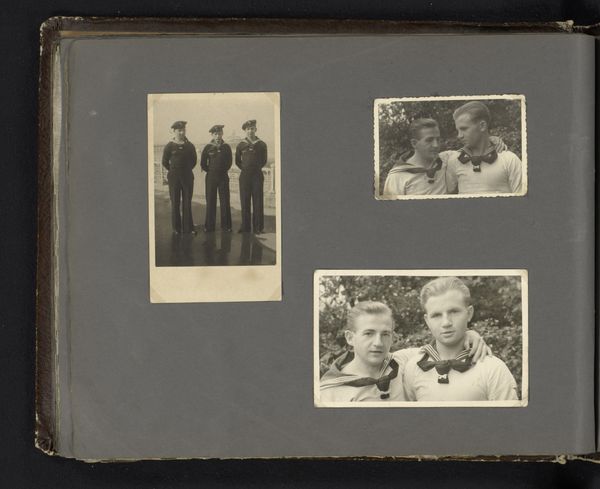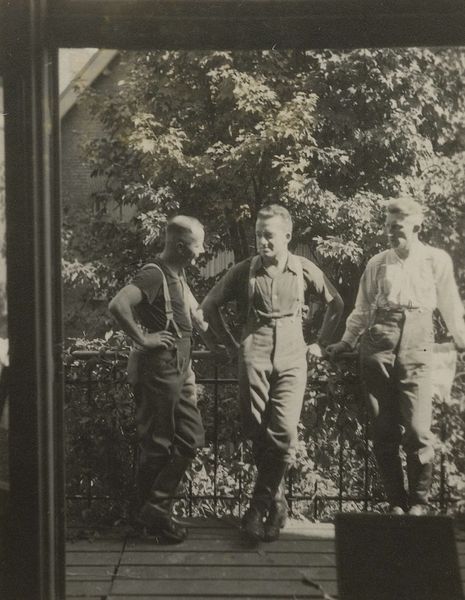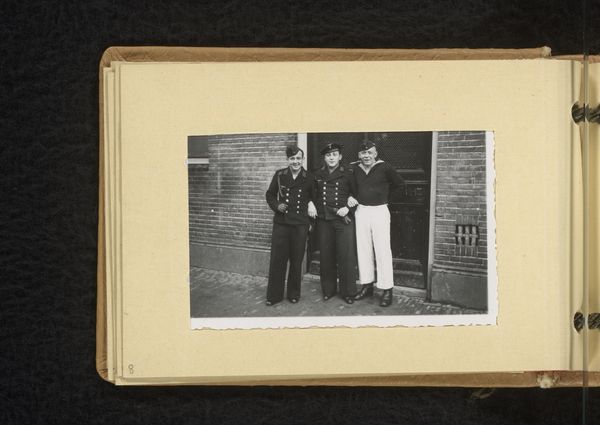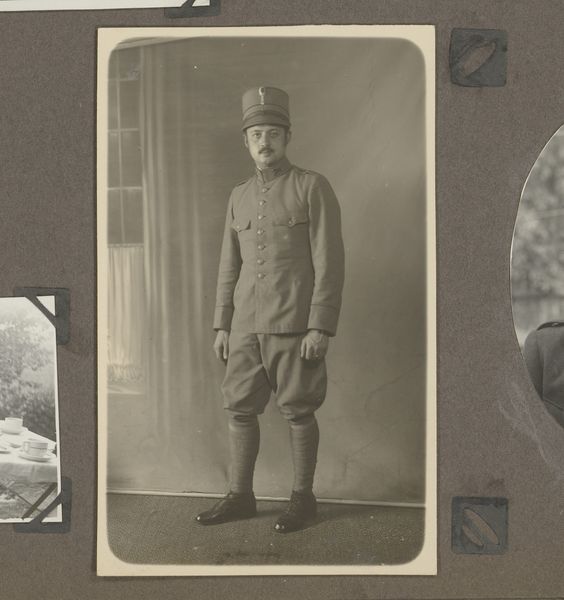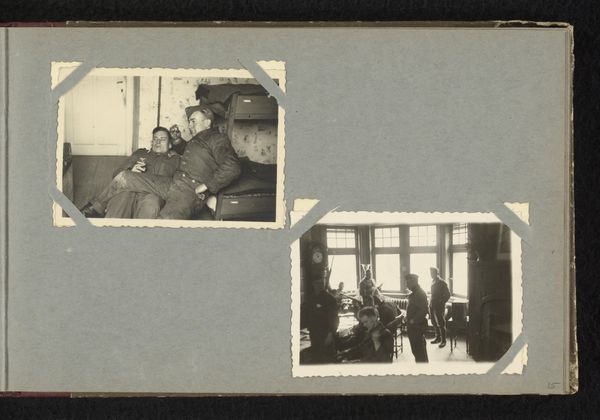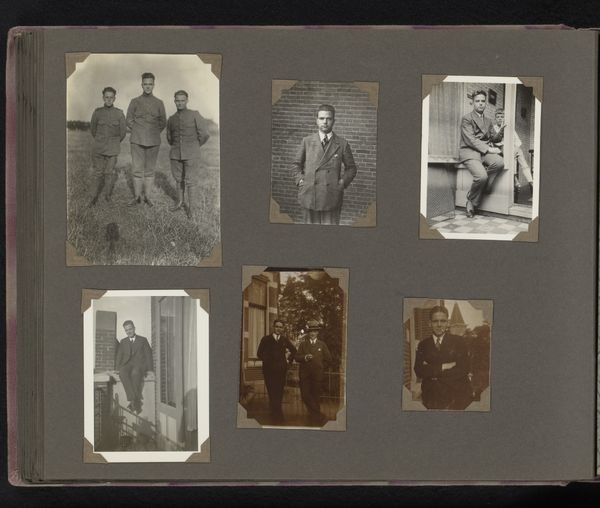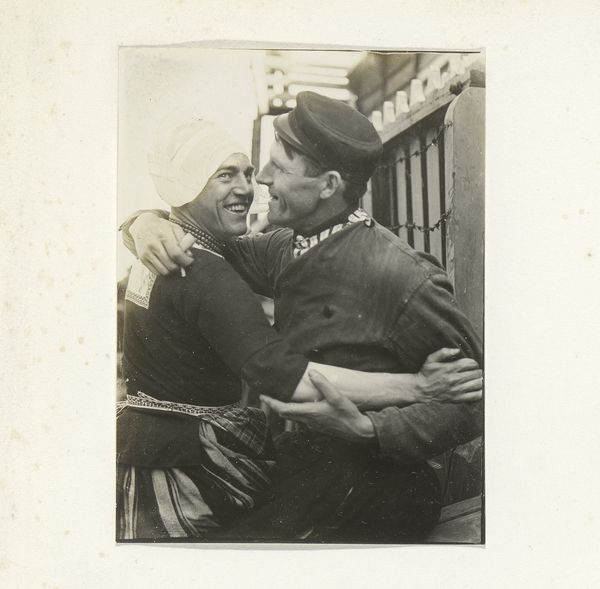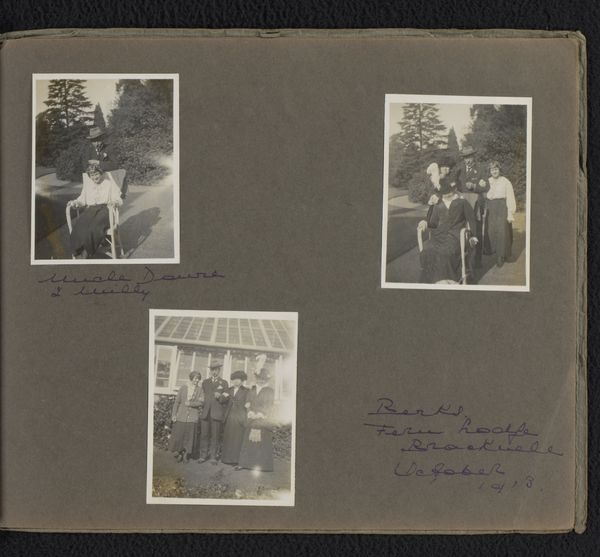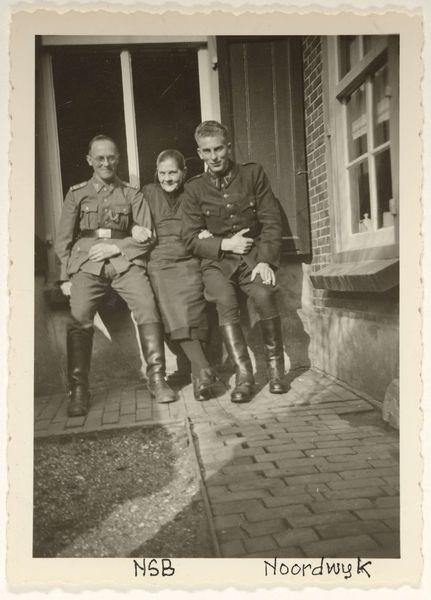
photography
#
portrait
#
photography
#
historical photography
#
genre-painting
Dimensions: height 88 mm, width 60 mm
Copyright: Rijks Museum: Open Domain
Curator: This compelling black and white photograph, taken between 1940 and 1944 by an anonymous artist, is titled "Three German Soldiers and a Woman." The work, preserved in the Rijksmuseum's collection, presents a stark portrait from the war era. Editor: There's an unsettling dissonance at play. The figures are posed casually, almost cheerfully, but the historical context casts a long shadow. The woman looks wary, while the men exude an unsettling confidence, even complacency. The overall composition feels stiff, despite their attempts at camaraderie. Curator: Indeed. The photographer, whoever they were, composed the shot to emphasize a particular geometry. The framing is almost documentary, lacking any artistic pretense; this enhances its raw authenticity. Look at the subtle variations in tone achieved despite the limited grayscale, contributing to a complex formal arrangement. Editor: What interests me is that purported intimacy. Who was she? What were the unspoken power dynamics at play here? The setting feels almost staged, yet there's something deeply uncomfortable about these men claiming ownership of a space—and implicitly, of her. It raises uncomfortable questions about collaboration and resistance in wartime. Curator: Agreed, the historical weight is undeniable. Yet, from a formal perspective, it's the interplay of light and shadow that arrests me. The way light illuminates the woman's face draws us into the narrative but also abstracts the narrative. It’s through studying the tonality of these forms and the composition that deeper, meaningful inferences come into view. Editor: But can we really detach form from content, particularly with a subject as politically charged as this? Ignoring that context would, I believe, miss a fundamental layer of meaning embedded within the photograph's supposed objectivity. The apparent candor is deceptive; it disguises the complexities of the occupation. Curator: I don't disagree that this piece begs a thorough socio-historical interpretation. Analyzing its form, however, lets us understand HOW the message is constructed, not just WHAT the message appears to be. And as you observe, its form has that affect on its meaning; the interplay of these interpretations gives insight into historical reality. Editor: Precisely, that fusion of understanding is key. It forces us to grapple with difficult questions, moving beyond surface-level observations toward a deeper engagement with the ethical and social ramifications of such images. Curator: A worthwhile goal when seeking to find true resonance from this work, indeed. Editor: Undoubtedly, thank you.
Comments
No comments
Be the first to comment and join the conversation on the ultimate creative platform.
